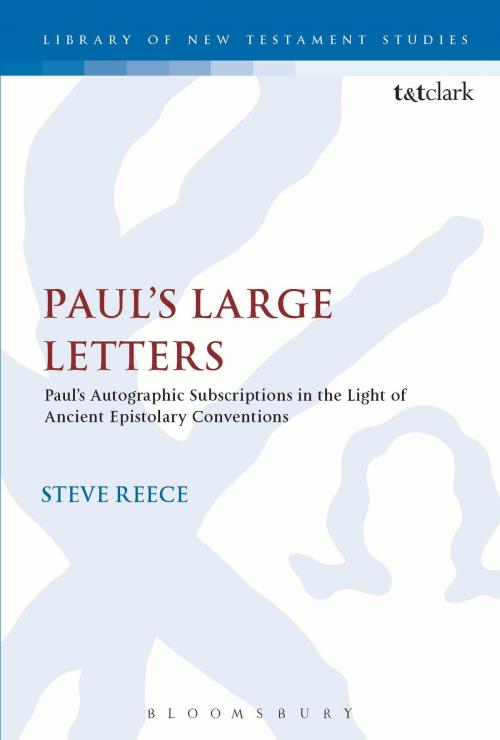Paul's Large Letters
Paul's Autographic Subscription in the Light of Ancient Epistolary Conventions
Nonfiction, Religion & Spirituality, Bible & Bible Studies, New Testament, Study| Author: | Professor Steve Reece | ISBN: | 9780567669087 |
| Publisher: | Bloomsbury Publishing | Publication: | December 15, 2016 |
| Imprint: | T&T Clark | Language: | English |
| Author: | Professor Steve Reece |
| ISBN: | 9780567669087 |
| Publisher: | Bloomsbury Publishing |
| Publication: | December 15, 2016 |
| Imprint: | T&T Clark |
| Language: | English |
At the end of several of his letters the apostle Paul claims to be penning a summary and farewell greeting in his own hand: 1 Corinthians, Galatians, Philemon, cf. Colossians, 2 Thessalonians. Paul's claims raise some interesting questions about his letter-writing practices. Did he write any complete letters himself, or did he always dictate to a scribe? How much did his scribes contribute to the composition of his letters? Did Paul make the effort to proofread and correct what he had dictated? What was the purpose of Paul's autographic subscriptions? What was Paul's purpose in calling attention to their autographic nature? Why did Paul write in large letters in the subscription of his letter to the Galatians? Why did he call attention to this peculiarity of his handwriting?
A good source of answers to these questions can be found among the primary documents that have survived from around the time of Paul, a large number of which have been discovered over the past two centuries and in fact continue to be discovered to this day. From around the time of Paul there are extant several dozen letters from the caves and refuges in the desert of eastern Judaea (in Hebrew, Aramaic, Nabataean, Greek, and Latin), several hundred from the remains of a Roman military camp in Vindolanda in northern England (in Latin), and several thousand from the sands of Middle and Upper Egypt (in Greek, Latin, and Egyptian Demotic). Reece has examined almost all these documents, many of them unpublished and rarely read, with special attention to their handwriting styles, in order to shed some light on these technical aspects of Paul's letter-writing conventions.
At the end of several of his letters the apostle Paul claims to be penning a summary and farewell greeting in his own hand: 1 Corinthians, Galatians, Philemon, cf. Colossians, 2 Thessalonians. Paul's claims raise some interesting questions about his letter-writing practices. Did he write any complete letters himself, or did he always dictate to a scribe? How much did his scribes contribute to the composition of his letters? Did Paul make the effort to proofread and correct what he had dictated? What was the purpose of Paul's autographic subscriptions? What was Paul's purpose in calling attention to their autographic nature? Why did Paul write in large letters in the subscription of his letter to the Galatians? Why did he call attention to this peculiarity of his handwriting?
A good source of answers to these questions can be found among the primary documents that have survived from around the time of Paul, a large number of which have been discovered over the past two centuries and in fact continue to be discovered to this day. From around the time of Paul there are extant several dozen letters from the caves and refuges in the desert of eastern Judaea (in Hebrew, Aramaic, Nabataean, Greek, and Latin), several hundred from the remains of a Roman military camp in Vindolanda in northern England (in Latin), and several thousand from the sands of Middle and Upper Egypt (in Greek, Latin, and Egyptian Demotic). Reece has examined almost all these documents, many of them unpublished and rarely read, with special attention to their handwriting styles, in order to shed some light on these technical aspects of Paul's letter-writing conventions.















